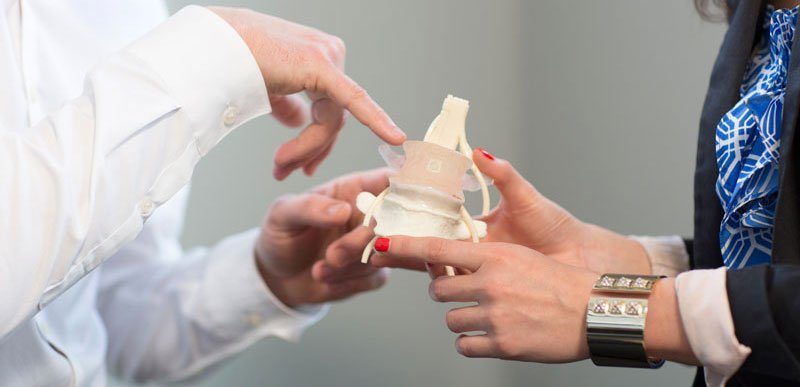
Recent studies[1. What matters most to people in musculoskeletal physiotherapy consultations? A qualitative study][2. The relation between patient education, patient empowerment and patient satisfaction: A cross-sectional-comparison study] on the effects of patient education in reducing stress and promoting long-term positive patient outcomes indicate that providing literature and visual aids that clearly describe or demonstrate the patient’s condition can help relieve anxiety and encourage a positive psychological state that fosters better health outcomes. Examples of patient educational tools include illustrated pamphlets, photographs, radiograph images, charts, and finely detailed dynamic design models to provide an overall contextual effect in framing treatment and health expectations.
Reframe Treatment Expectations by Providing Context
Clinicians, chiropractors, and physical therapists who are prepared with effective aids to answer their patients’ questions about disc herniation, bulging discs, disc degeneration, annular fissure, osteoarthritis, stability, hypermobility, nerve pain, sheer instability, neutral loading, recumbency, facet or disc pain, disc height changes with static loads, diurnal changes, and other spinal conditions can look forward to a better patient-practitioner experience, more patient cooperation, and a better long-term treatment outcome for their patients than those who rely on simple diagnosis and treatment procedures without effective patient education.
Empower Patients with Biopsychosocial Approach
By providing patients with a better understanding of their condition through the use of dynamic models or other visual devices, practitioners improve patient-clinician treatment collaboration and empower patients to take a more active role in their own healing agenda. This biopsychosocial approach to treatment has been shown in studies to generate more positive, long-lasting treatment outcomes and improve relationships between patients and practitioners, fostering trust, communication, and respect.
When practitioners take the time to help patients understand their condition, the patient feels more supported and engaged in the healing process and report being generally happier with their treatment plan. Using a person-centered approach to healing, the practitioner is concerned not only with a patient’s diagnosis and treatment, but is also concerned about the patient’s perception of his diagnosis and treatment experience. This perception, according to studies, is more positive and empowering when the practitioner takes the time to fully address the patient’s concerns and questions and uses visual aids, images, charts, literature, dynamic designs, and other tools to demonstrate what the patient is experiencing and how the treatment will work.
Keywords: dynamic models and other tools in patient education, use of dynamic models or other visual devices, finely detailed dynamic design models, patient educational tools, biopsychosocial approach to treatment, disc herniation, bulging discs, disc degeneration, annular fissure, osteoarthritis, stability, hypermobility, nerve pain, sheer instability, neutral loading, recumbency, facet or disc pain, disc height changes with static loads, diurnal changes
Share Now